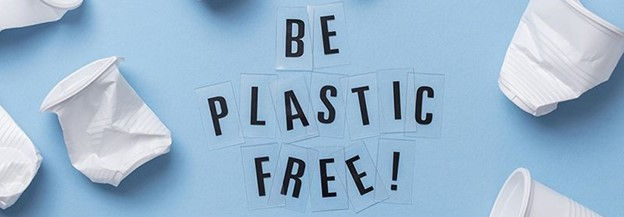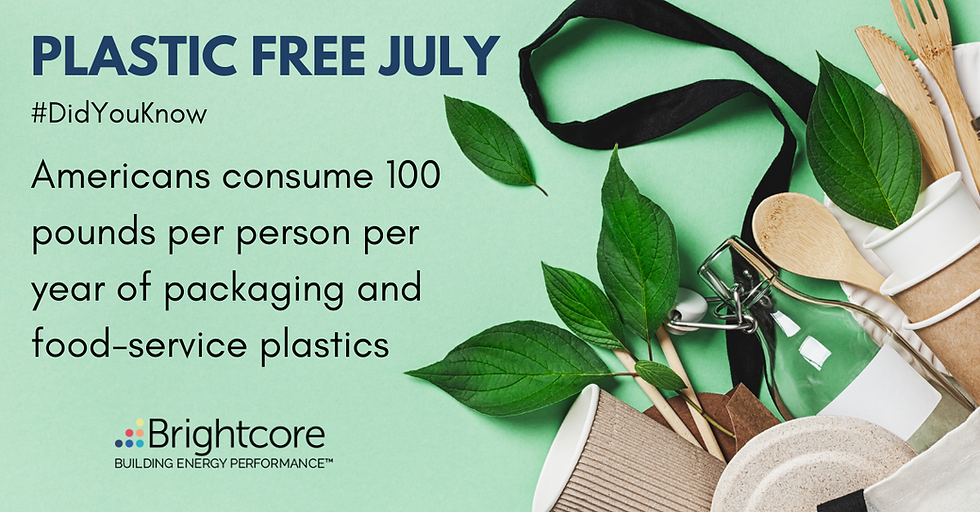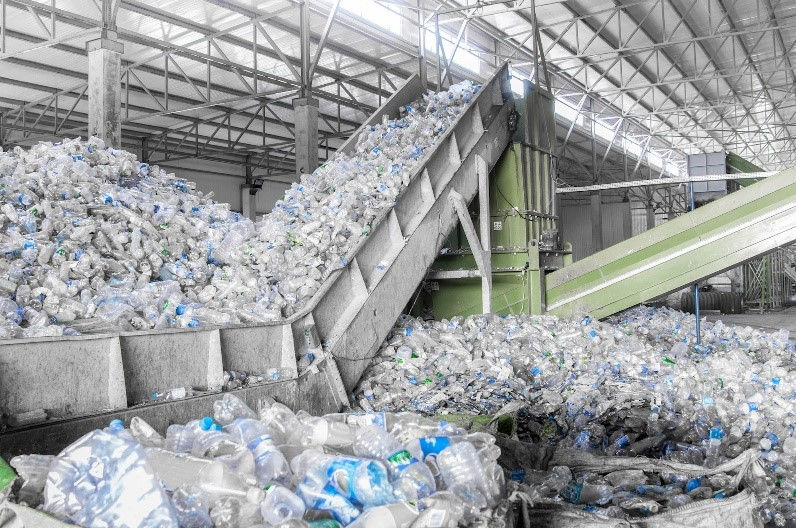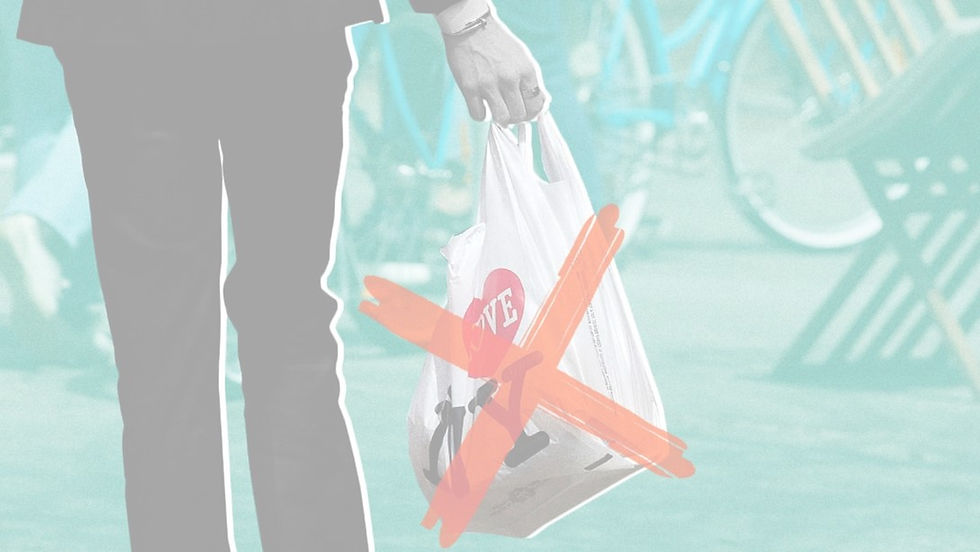- Jul 19, 2021
- 8 min read
Plastic Free July: Ways to Reduce Plastic Dependence

July is full of fun summer activities, unfortunately with lots of single-use plastic accompanying them. It is challenging to enjoy beaches, oceans, and lakes when they are typically associated with a large concentration of plastic pollution.
This is the awareness the Plastic Free Foundation raises with their global Plastic Free July challenge. The initiative encourages organizations, businesses, communities, and individuals to take the pledge and reduce plastic consumption. In the spirit of this initiative, this blog will dive deeper into the hotter topics in waste management.
Trashy Facts on Plastic Use & Recycling

In the United States, approximately 37 million tons of plastic are used every year. On average, Americans consume 100 pounds per person per year of packaging and food-service plastics.
Recycling plastic has helped reduce emissions by eliminating the need to extract and process raw materials. Recycling plastic saves approximately 30 percent of carbon emissions compared to the original plastic production process. Although recycling plastic capabilities and volumes have increased since its production, the total plastic recycled in the U.S is relatively small- three million or 8.7 percent of all plastics consumed.
The rest of plastic is mostly landfilled with some volume also slipping in our natural environments.
How is it possible to reduce plastic?

Typically, when campaigns mention reducing plastic waste, they are referring to single-use plastics. These plastics are supplemental plastic materials that are meant to be used once and then thrown away. Single-use plastics are a good starting point since they generally have reusable alternatives. However, plastics are not always easily avoidable as they have become a staple for all kinds of packaging.
This can be challenging for consumers to reduce their individual consumption when essential items do not offer plastic-free options. It is crucial to systematically reduce plastic products and have a system to prevent plastic pollution from reaching our natural resources. According to the Pew Charitable Trusts study in Science, we could reduce plastic waste by 80 percent over the next two decades using existing infrastructure.
There are a couple of steps to get to that stage.
Pathways for Plastic Reduction

International, Federal, and State
Policies and mandates are the most effective way to reduce the source of plastic. Regulations and purchasing power from the institutional level can drive incentives and systematic change for decreasing our dependence on plastic. The following are a couple of examples of actionable items governments can participate in that have been excerpted from NRDC's Presidential Plastic Action Plan:
-
The purchasing power of government and companies to eliminate single-use plastic items and replace them with reusable products.
-
Fines for plastic pollution and penalties for not reaching reduction targets.
-
Governments to suspend and deny permits for new or expanded plastic production facilities and infrastructure.
-
Advance environmental justice in petrochemicals.
-
Update existing federal regulations to curtail pollution from plastic facilities by using the best available science and technology.
Corporations
Various companies have been under heat for their historic unaccountability regarding waste management of products. It has been a common practice to place the burden of plastic waste on the consumer. Although individuals play a significant role in sorting materials, there are multiple barriers to achieving high collection and recycling rates. A few factors include the composition of mixed plastic, low access to proper disposal/collection sites, and material sorting limitations for Material Recovery Facilities (MRF).
Ultimately, reducing plastic in products and throughout the supply chain is a more effective strategy that corporations can participate in a couple of ways:
-
Measure and disclose annual plastic use in products and the entire supply chain.
-
Create reduction, recycling, and reuse goals with aggressive target dates (1-5 years).
-
Join or support non-profits to collaborate on plastic-reduction activities and goals.

Individuals
The strongest influence to reduce the source of plastic is through policy and reduced supply.
However, there are still ways dedicated individuals can participate in plastic-free alternatives if it is accessible and convenient for them. There are ways to eliminate single-use plastics or volunteer with organizations.
-
Voice support for plastic-free laws with local council and congressmen.
-
Volunteer and donate to organizations whose work specializes in education, advocacy, and program implementation.
-
Take it into your own hands! Replace single-use plastics with reusable alternatives or participate in a clean-up day.
A Waste-Free World
Reducing plastic is imperative to ease waste management, avoid toxic pollution, and promote a healthier living environment. Prominent players, such as companies and governments, should elevate action taken towards this issue. However, individual awareness and communication on these topics are essential. Participate in a Plastic Free July activity to take one step closer to a waste-free environment.


